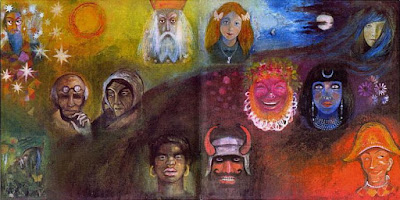
As I understand it, a main aspect of mythological/archetypal criticism is analyzing and finding archetypes to better create understanding of the text. Archetypes are generalizes characters that embody meaning. For example, there is often a character in a book that is the power-hoarding king or leader. We can consider Hitler and Mussolini, two terrible dictators, to both embody this archetype. Then there is the "damsel in distress" archetype, as Mr. Burke likes to call it. This includes Rapunzel, Cinderella, or even the girl next door. Archetypes can simplify a character into a generalized category, comparing that character to others, in order for the reader to better understand that character. Besides the archetypes present in novels and even real life, mythological/archetypal criticism deals with recurring images and themes as well. Colors can represent specific feelings. For example, red can signify pain. Images of circles represent the circle of life. Every aspect of the novel adds up to create and support a "collective unconscious" of the human race.